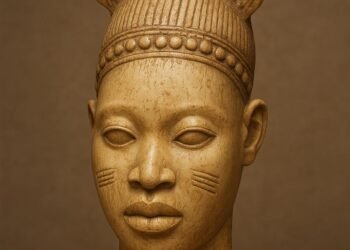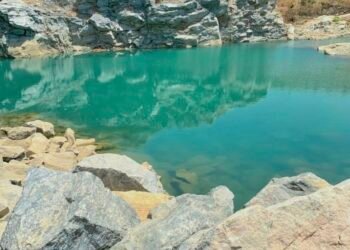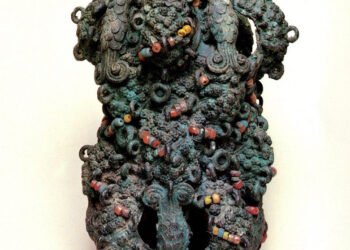Sukur Stone: A Symbol of Ancient Craftmanship
Far up in the Mandara Mountains, where Nigeria whimpers over the border into Cameroon, there is a kingdom where time itself has been terraced onto the hillside.
This is the Sukur Cultural Landscape, a place of profound quiet and breathtaking accomplishments. It is not merely a collection of ruins, but a living, breathing community of people, a testament to humanity that has earned the distinction of being Nigeria’s first World Heritage Site and the first cultural landscape in all of Africa to be included on the distinguished list.
To walk through Sukur is to tread through the centuries of culture, religiosity, and resilience.
Table of Contents
Sukur Stone’s History
Long before modern industry, Sukur was a powerhouse built on iron. This isn’t just a story about tools; it’s about how mastery over fire and earth built a thriving kingdom.
For centuries, the skill of its blacksmiths turned local magnetite ore into valuable goods, fueling the region’s economy and defining Sukur’s identity.
The dominance of people over raw materials and manufacturing processes created wealth and power, allowing a civilized society to flourish high in the Mandara Mountains.
Read Also: Aso Rock: The Heart of Nigeria’s Scenic Beauty
While external invasions in the early 20th century finally brought silence to the furnaces, the cultural heritage of this period of ironworking is indelibly embedded in Sukur’s terrain and consciousness, an abiding testament to imagination and perseverance.
Is Sukur a UNESCO Site?
UNESCO’s recognition of Sukur extends beyond aesthetics; it’s a celebration of living culture. It’s a culture in which tradition is not stored; it’s lived daily. That’s what makes Sukur stand out.
It was not added to the World Heritage List merely because it is old or pretty. It was added to the list because it shows how human nature and nature can coexist in harmony, century after century.
It has a continuous narrative that unfolds, a story of religious belief, social structure, and land use that has remained largely unchanged over the centuries.
Compared to a sterile museum exhibit, Sukur thumps with life. It is home, a farming society, and a spiritual hub all wrapped together, offering the world a persuasive show of cultural resilience and environmental concern.
A Landscape Built for Purpose
Sukur hillside in the distance is a stairway to heaven, green as can be, not a jungle but land shaped by human hands over centuries.
Hidi’s Palace sits atop the hill, the religious and governmental core of the village. Terraces of crops flow down the face of the mountain below, each supported by strong, mortarless dry-stone walls. The terraces are the lifeblood here.
Read Also: Uncover the Mysteries of Zuma Rock in Nigeria
Plowland for cultivation, yes; but they also prevent the earth from moving, halt erosion in its tracks, and retain precious water. Each plot, each wall, each walkway is purposefully placed, balancing functionality and cultural awareness to provide a strong and peaceful home.
Sukur Stone – Daily Life in the Stone Village
The villages of Sukur unfold like a natural extension of the mountain itself.
Nestled below the Hidi’s Palace, the homesteads are arranged with thoughtful intention, connected by a network of low stone walls that outline family compounds and shared pathways.
The architectural style is purposeful and pure; rounded mud-brick houses feature thick, insulating walls and high-pitched thatched roofs, offering cool shelter from the sun.
Within the compounds, you’ll find sunken animal enclosures, elevated granaries protecting harvests from pests, and most remarkably, ingeniously designed underground wells.
These wells, capped with distinctive conical stone lids, ensure a reliable water supply. Every structure reflects a deep understanding of the environment, built for community living, natural cooling, and thoughtful resource management.
This is a living village, not a museum, where architecture serves daily life in quiet, enduring ways.
The Sukur Spiritual Center
Here in Sukur, the material and physical exist deeply connected to the spiritual. This is not a place where sacred sites are defined as separate; instead, religion is woven into everyday life.
Old trees that border trails and protect entranceways are sacred. Stones and peaceful shrines are naturally incorporated into terraces and homes, making this a highly consecrated space.
Though the spiritual beliefs at the heart of the community are guarded secrets, their presence is omnipresent; a tremendous, invisible power that imbues meaning in stone and earth.
Though the smelting rituals have disappeared, numerous other customs persist. The leadership of the Hidi continues to be intertwined with religious responsibilities, and cycles of agriculture are regulated through age-old traditions.
This condensed intangible legacy, built up over generations, is the one that actually gives Sukur’s material architecture its life and renders it a living cultural heritage.
Unanswered Questions of Sukur
Some of Sukur’s most compelling stories remain tucked away in the quiet wisdom of its elders.
The deeper meanings behind spiritual symbols, carved stones, and ritual sites are closely guarded, shared only within the community.
Read Also: Why Erin Ijesha Waterfall Should Be On Your Bucket List
This discretion adds a layer of depth to the landscape; a sense that visitors witness only the surface of a much richer narrative.
Similarly, the technical mastery of the ancient iron smelters, once the bedrock of Sukur’s power, has now largely faded into silence.
The exact methods and rituals that transformed rock into valuable metal are gone, leaving archaeologists to study the silent remains of furnaces and slag heaps.
The biggest enigma, maybe, is why Sukur has so fiercely held onto its identity. In the era of rapid change and external pressure, the continuation of its traditions by its people is a firm, silent testament to the strength of its cultural foundation.
Sukur’s Contemporary Challenges
In the direction of tomorrow, Sukur faces a chain of complex challenges that test its long-term viability.
Increasing uncertainty in climatic patterns threatens the ancient agricultural terraces and places in jeopardy the very foundations of their long-term farming.
Security remains a persistent issue following past regional conflicts, which have left a lasting impact on the security sector’s psyche.
Most potentially damaging, perhaps, is the threat from within: younger generations increasingly gravitate towards opportunities beyond the mountain, leading to the risk of erasing the centuries’ worth of traditional knowledge that has sustained Sukur for so long.
In response to this, preservation work by local custodians and national organizations alike focuses on meticulous, culturally sensitive restoration. Using only traditional material and ancient methods, they are working to preserve Sukur’s physical character and its soul.
Sukur’s Message to the Modern World
During the era of climatic uncertainty and rapid change, Sukur offers solutions that go beyond history.
This community has a long-standing tradition of sustainability, having thrived for centuries through effective land stewardship and water management, never depleting its resources.
Its terraced landscape and traditional practices offer a robust alternative lifestyle that fosters harmony with nature. Furthermore, Sukur is a rich cultural landmark, boasting a well-established African heritage that predates the advent of colonialism.
It reminds us that development can preserve tradition. In a world too frequently determined to dominate the environment, Sukur’s persistent harmony with nature presents a quiet but powerful model for a more sustainable future, founded upon respect and resilience.








